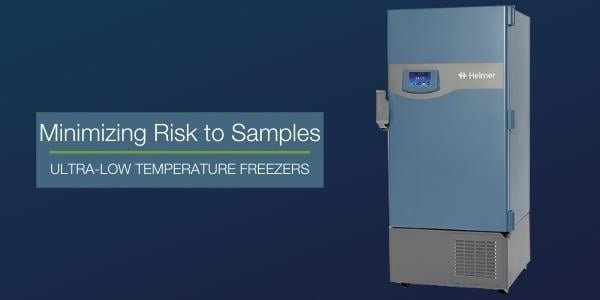Laboratories rely on ultra-low temperature freezers to maintain the integrity of precious patient samples and test materials. The most important function of an ultra-low freezer is to prevent stored products from being exposed to warmer temperatures. All aspects of the freezer’s design should support this purpose.
Of course, laboratory staff must access the contents of the freezer on a regular basis. Opening the freezer door naturally allows some warm air to enter the cabinet but should not have a dramatic impact on the temperature throughout the entire storage space.
Over the years there have been significant differences in how various freezers were designed and how well they safeguarded samples during door openings. Typically, ultra-low freezers have a heavy-duty outer door plus an inner door for each shelf within the unit. Together, the inner doors and shelves create enclosed storage compartments within the freezer.
The primary purpose of the inner doors is to prevent warm air and moisture from entering the compartments when the outer door is opened. They should also protect the contents of other compartments when the outer door and an inner door are opened. How they are designed is critical to protecting samples during door openings.
Since temperature performance during door openings is important, Helmer Scientific performed an evaluation of what happens to the temperature throughout the storage space inside the freezer when the outer door and one of the inner doors are opened. Two ultra-low freezer models were tested, one from Helmer Scientific and one from another manufacturer.
A key difference between the two models is one is designed with inner doors that are very well sealed, while the other has inner doors that are not sealed, allowing warm air to enter the storage compartments. The two units were tested to determine the increase in cabinet temperature when the outer door and one inner door are opened 90 degrees.
Other Blogs You Might Be Interested In...
- Video: How to Achieve a Quieter Working Environment in Your Lab
- Cost Effective Centrifugation for Lipemic Samples
- GX Solutions Refrigerators Support Sustainability & Reduce Cost of Ownership
- High Performance Storage for Current and Leftover Specimens
We anticipated well-designed inner doors, fully sealed with gaskets, would have some impact on freezer performance. We were surprised to learn what a dramatic difference the design of the inner doors makes.
Review our white paper, “Ultra-Low Freezer Design: Protecting Samples During Inner Door Openings,” to learn how critical this feature is to protecting samples from temperature increases due to door openings.





